- By Marc Gaulier, AEG Fellow
A wide array of perspectives regarding smart buildings and grid modernization were on display at the Q2 SFAE Stakeholder Meeting on May 9, 2019. Stakeholders such as the City of San Francisco, the California Independent Systems Operator, private industry, and others held lively conversations to develop pathways to expanding the adoption of smart building technology in the city.
H.G. Chissell, Advanced Energy Group
H.G. Chissell, the Founder and CEO of Advanced Energy Group, kicked things off by discussing the decarbonization challenge for San Francisco’s buildings. San Francisco has some of the most ambitious emissions targets of any major American city and has been making strides to decarbonize its energy sources. However, H.G. reminded SFAE stakeholders that the larger hurdle remains in enabling buildings to integrate with a cleaner grid through DER adoption, building electrification, and digital infrastructure.
Lock Holmes, Duane Morris
Lock Holmes, Partner at host law firm Duane Morris, then spoke, highlighting his firm’s commitment to promoting renewable energy and sustainable technologies before handing the lectern off to the morning’s discussion leaders.
Tyrone Jue, San Francisco Mayor’s Office
First, Tyrone Jue, Senior Advisor on the Environment for the Mayor’s Office, drove home the importance of developing a city-wide integrated building decarbonization strategy. He made it clear that energy efficiency measures and building electrification can make up the lion’s share of emissions reduction targets, but that continued action is necessary to avoid stagnation in meeting those targets. To illustrate this point, Tyrone pointed to the building electrification policy in the city, highlighting that if the building code isn’t updated to mandate all-electric construction by 2030, rather than 2020 or 2023, the city will have missed huge opportunities for emissions reductions.
Paul Woolford, HOK
Next, Paul Woolford, SVP at HOK, gave the audience some success stories from the field on designing energy efficient yet cost-effective buildings. Using nature as inspiration, the architects at HOK have developed designs for buildings that take advantage of the space in which a building is located to reduce energy usage without having to incorporate expensive HVAC or lighting solutions. Paul gave the example of a tech campus that had an EUI of 40-50 at a cost of $200-$300 per square foot, which is comparable to most regular commercial buildings. AEG tasks discussion leaders with identifying solvable challenges. Paul’s problem statement for the group was,
We are using mid-20th century performance models to assess Net Zero Energy and Carbon Solutions for Building Systems and Façade Solutions; this neglects a building’s sense of place.
Peter Klauer, CAISO
The audience then heard from Peter Klauer, a senior advisor at the CAISO, who provided perspective on the challenges that building electrification and renewable integration will pose in balancing the grid in the future. As the California grid has had to integrate increasing penetrations of behind-the-meter distributed assets, Peter reminded the stakeholder participants that the duck curve has only gotten more pronounced, with daily ramp rates now regularly reaching 10GW over a 3 hour period. Furthermore, as plug-in EVs become more popular, the shape of the load curve will become less smooth over the course of the day. The main challenge that the CAISO faces is in unifying multiple levels of the grid to ensure reliability while meeting California’s RPS goals. Peter posed a potential twelve month challenge for the stakeholders:
Demonstrate that DERs can be controlled in such a way as to assist, rather than hinder, the grid balancing efforts of utilities and the CAISO.
Dave Hulinsky, Black & Veatch
Dave Hulinsky, a director at Black & Veatch, spoke next about the digital grid and the decarbonizing impacts that the smart grid promises to provide in the future. Dave highlighted the full stack of digital grid solutions provided by B&V, from AMI to full transmission network infrastructure, making clear the interconnectedness that will be necessary to support grid modernization. A major enabling technology underlying all this is 5G networks, which will provide the bandwidth necessary to safely integrate building energy usage, transportation infrastructure, and utility services. Dave identified the following problem statement for stakeholders to address,
Develop a full duplex digital electric grid.
Barbara Hale, SFPUC
Last but not least, Barbara Hale, Assistant General Manager for Power at SFPUC, spoke about the city’s goal of meeting decarbonization goals equitably, ensuring no citizens are left behind in the clean energy transition. She highlighted the issues in limiting NZE building definitions to single structures. She gave the example of a city building with only a portion of its roof covered in solar panels to meet the energy needs of that particular building while the remainder of the rooftop area could have been used to power nearby buildings. This dilemma was phrased in Barbara’s problem statement, which stakeholders voted to deliberate on:
Lack of shared smart building innovations (like renewable electricity generation, EV charging, battery storage, peak-shaving technologies) across City and customer properties.
After a lively discussion by the six different stakeholder groups, several trends emerged in tackling this problem. Most groups agreed on the necessity of finding an ideal site for a pilot program and in developing a clear business strategy for sharing smart building innovation across building walls. In the end, Group 6’s winning approach to Barbara’s problem was selected:
Q1: Identify optimal location(s) for beta demonstration project that integrates comprehensive DER technologies across public boundaries.
Q2: Preliminary analysis.
Q3: Identify cost estimate and financing options.
Q4: Achieve demonstration site customer commitment to move forward.
Group 6 was voted the winning approach as a result of the scope of the proposal, as well as its ambitiousness in bringing about change in how buildings can interact in the city. After the vote was held, Jonathon Stage of Willdan volunteered to be the Q2 Task Leader for smart buildings and grid modernization, and will be tasked with providing measurable results in the coming stakeholder meetings.
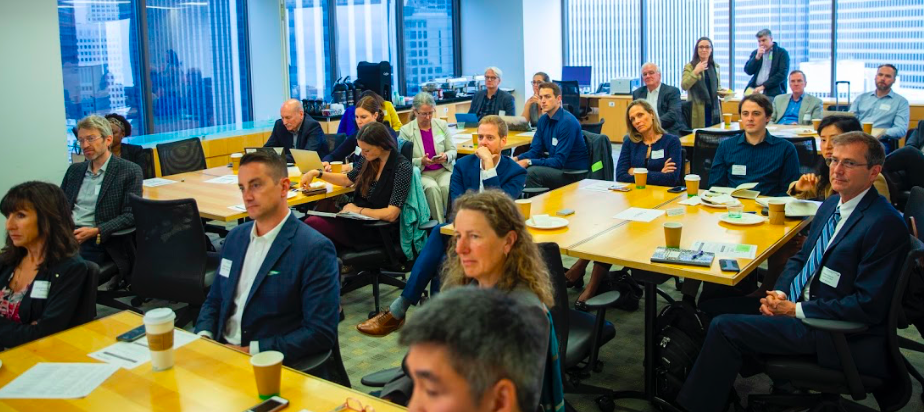
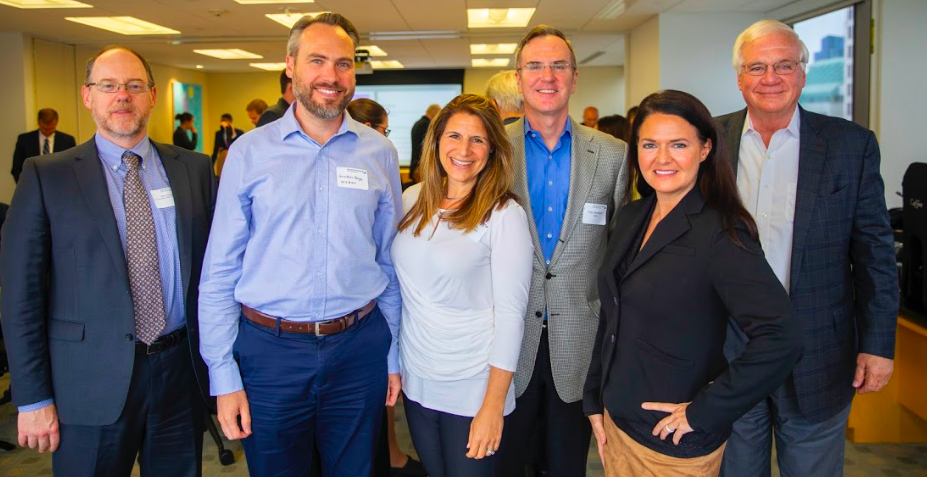
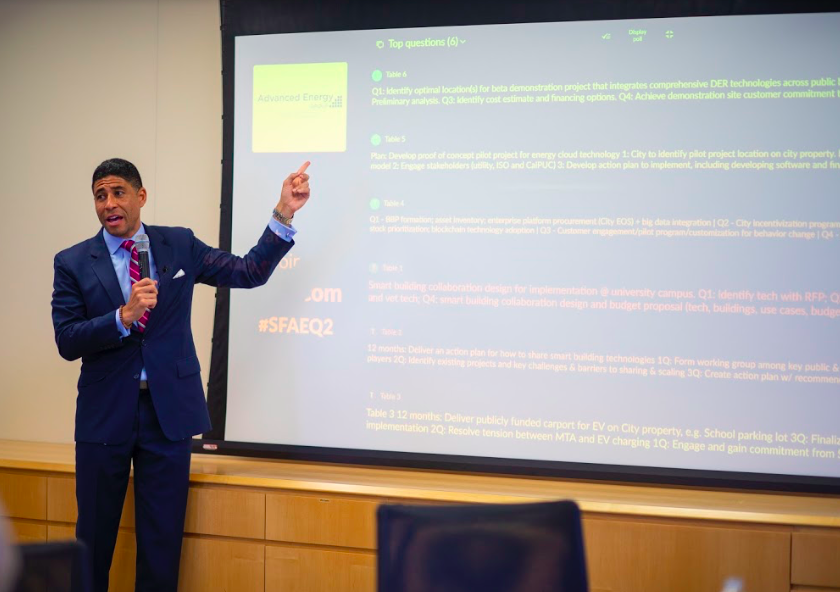
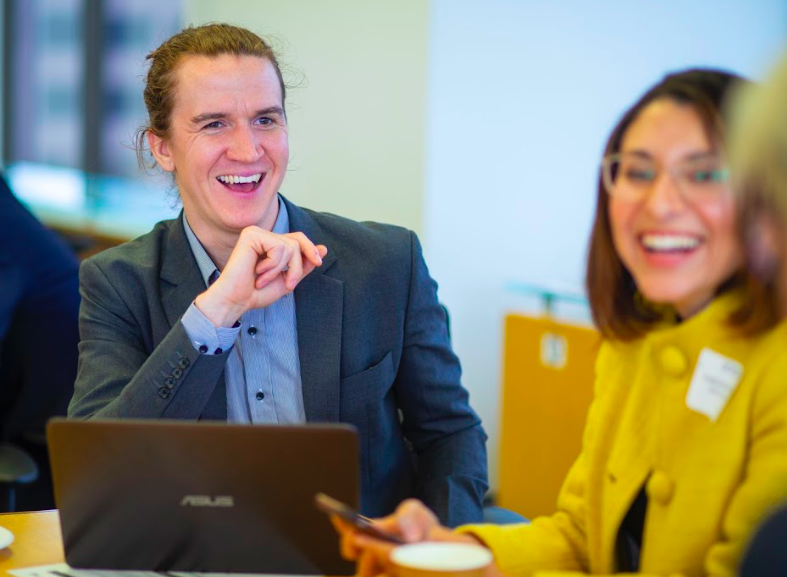

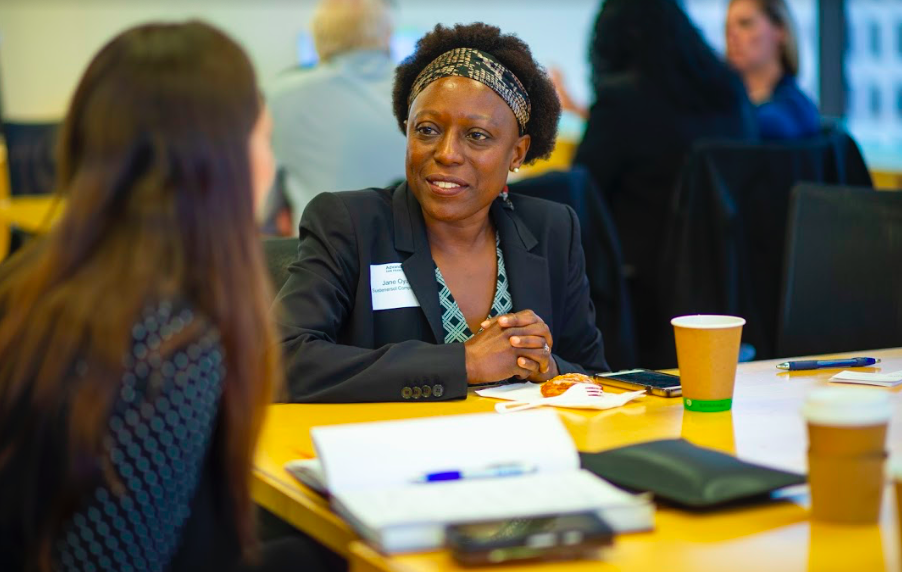
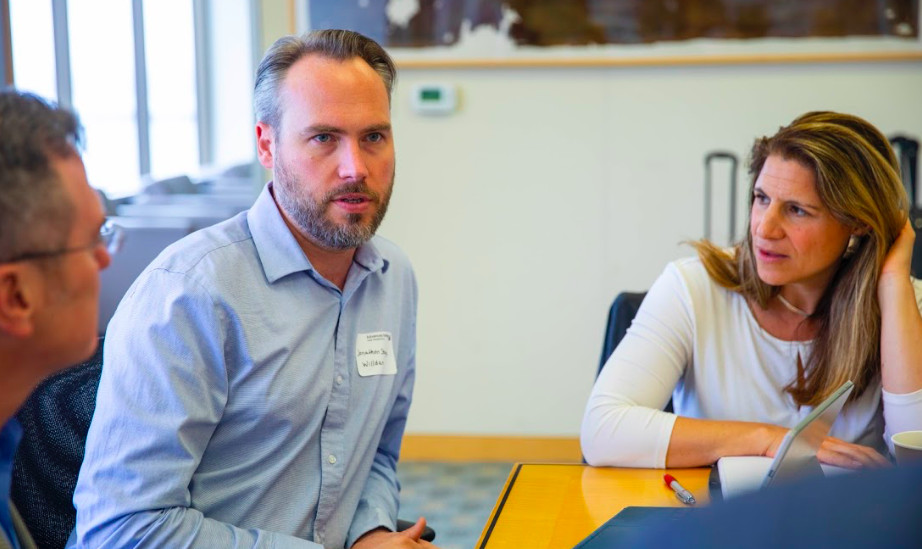
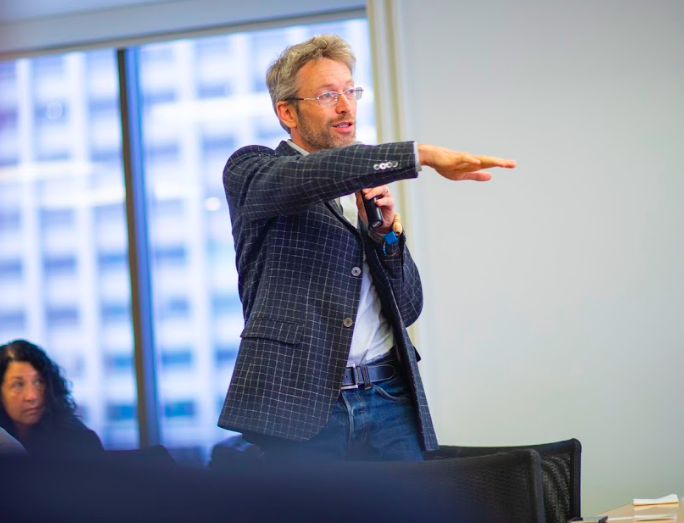
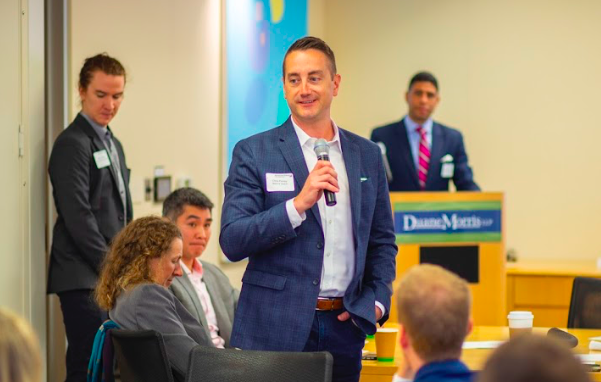
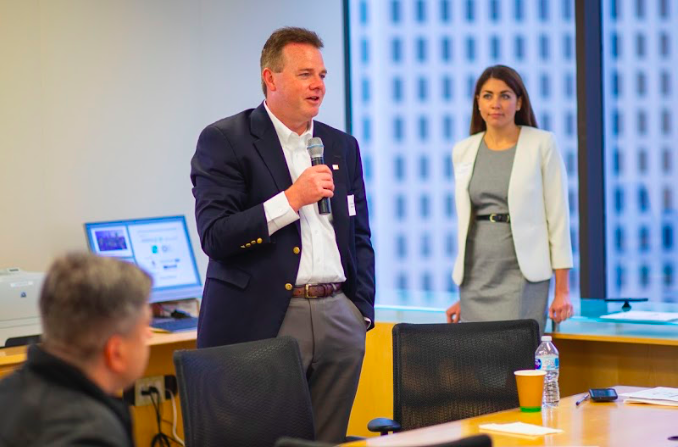
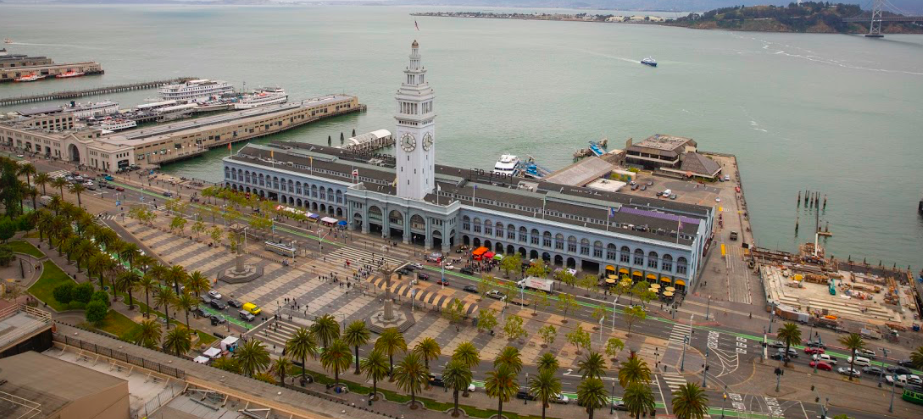
The Q3 stakeholder meeting will be held in conjunction with the Verge conference in Oakland on October 24, 2019. The topic of this stakeholder meeting will be IoT, Technology, and Innovation.
Non-Member Registration Link.
(Members will receive a custom invitation.)
Advanced Energy Group is a stakeholder member-supported organization committed to developing and delivering advanced energy policies and solutions in key cities. Stakeholder sessions are by invitation only. For details of our programming please visit:
AEG Event Calendar | Podcasts | Videos | LinkedIn | Twitter







